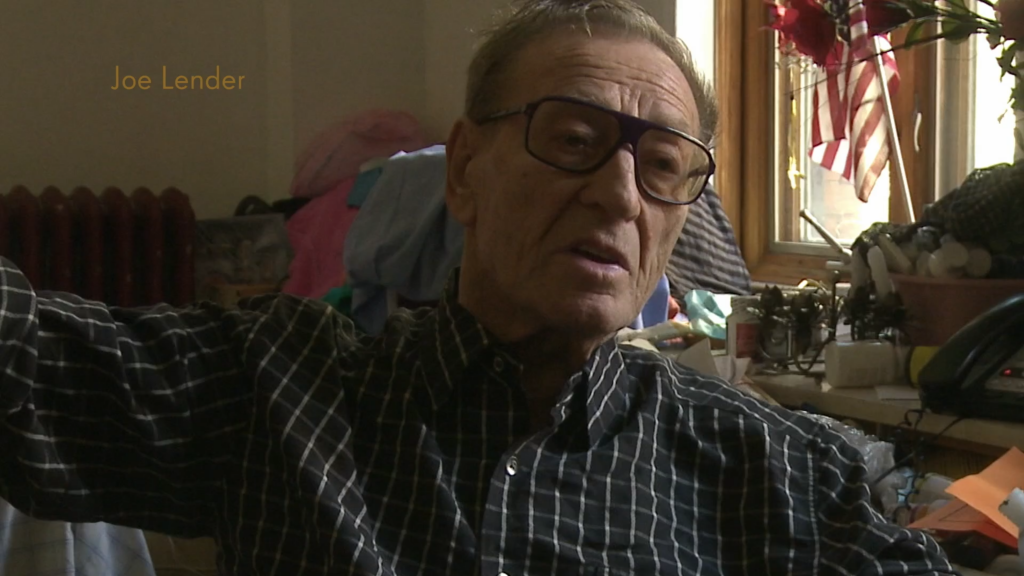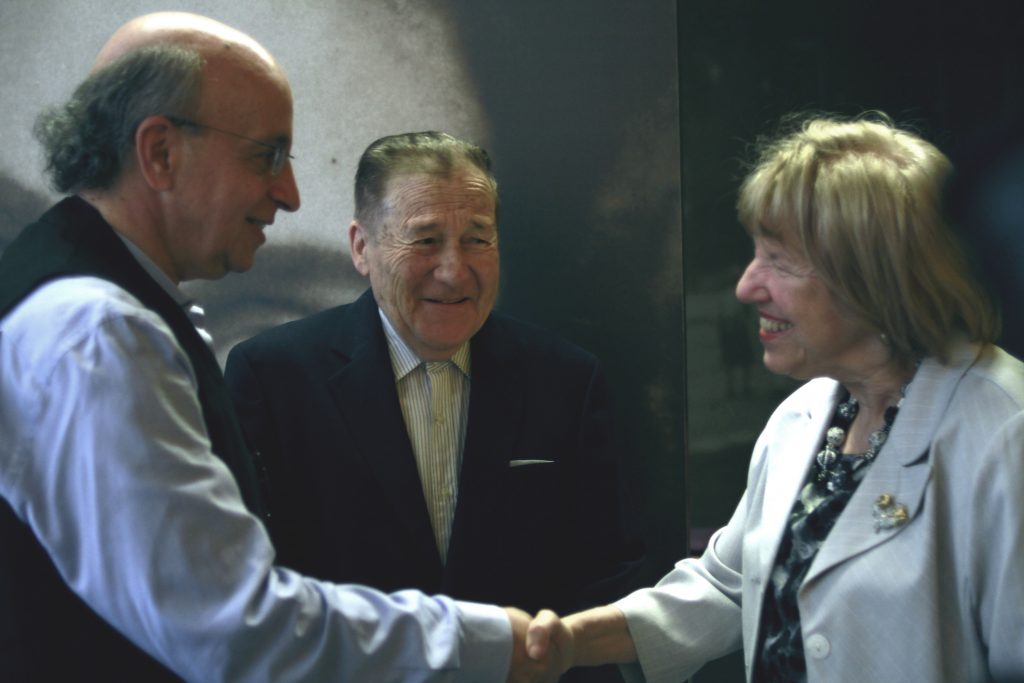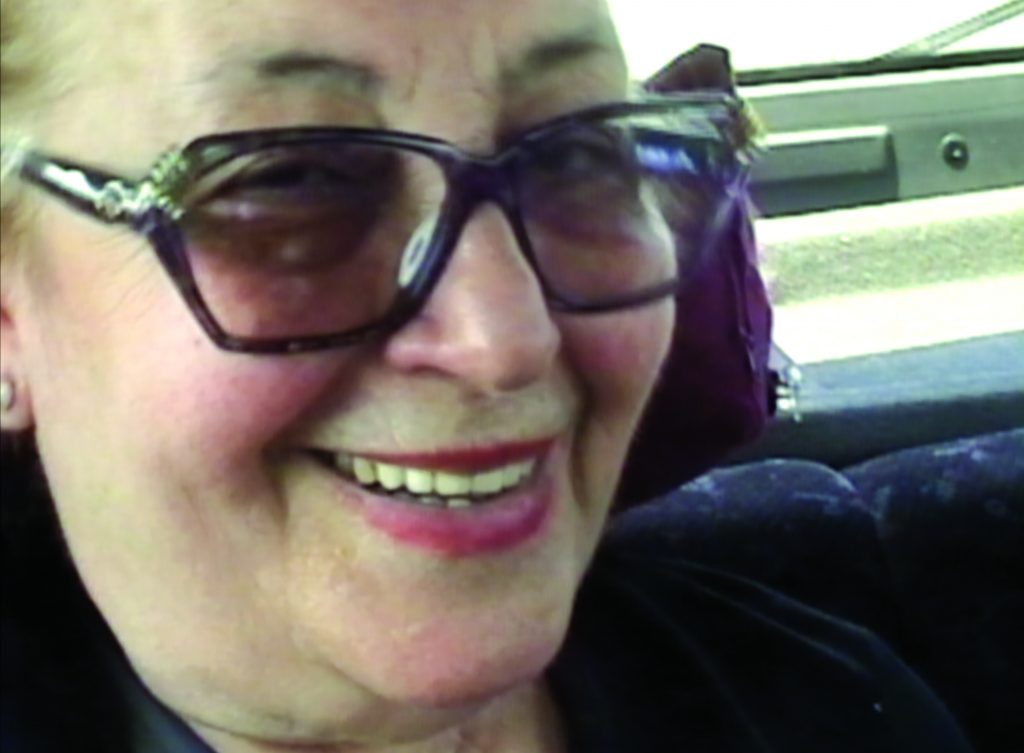
Marion Blumenthal Lazan
The first time I met Marion she carried a picture of her 104-year old mother, who took care of her throughout the war. She was born in the small German town of Hoya an der Weser, near Hannover, where just 30 Jewish citizens encountered the arrival of the Nazis in 1938. Marion, her mother and brother were the only ones to survive the war. The family spent nearly six years in several concentration camps, including Westerbork, where she might have met Anne Frank, and Bergen Belsen, from where they were liberated in 1945. A few years later they settled in Peoria, Illinois, where Marion met her husband and life partner Nathaniel Lazan, a former pilot in the US Air Force. Since 1979 Marion has spoken to over one million people, mostly students, in the United States and Europe about her wartime experiences. She is part of a large, observant family, and has been honored by her native community in Germany on several occasions.
Today Marion, a resident of Hewlett, NY for almost 58 years, spends much of her time sharing her Holocaust experiences as a child in public, private and parochial schools of all denominations throughout the United States, the UK, Germany, Israel, and the Netherlands. Marion has received many awards and honors for the work she does, but an outstanding event was the naming of a high school in Germany in her honor – the Marion Blumenthal Oberschule. Although now in her mid-80’s, Marion keeps a rigorous schedule, having made 21 round trip flights in 2017, plus auto trips to local venues. Marion does this as she knows today’s generation is the last to hear first-hand accounts of that dark time in history.

Sol Rosenkranz
Recently, I was able to attend Sol’s 100th birthday bash, which was held at the Museum of Jewish Heritage, in the same room where my daughter Mia had her Bat Mitzvah party.
Sol was the youngest member in an observant family of eight from the small Polish town of Krosniewice, half way between Warsaw and Berlin, which was occupied by the German Army on September 16, 1939. Once his father was taken away, the rest of the family spent two years in the local ghetto, where Sol found work as an orderly. Following a tip by the a Nazi officer, he was able to save himself and his entire family a day before the ghetto was liquidated. Sol worked in various factories and made his way through a number of camps, finally seeing the US Army entering Theresienstadt. However, luck did not hold up for the rest of his family. With the exception of his brother Henry, none of them made it through. Right after the war he married Sally Kuperwasser and the couple found their way to New York, where he went into the slip-cover business. For health reasons, the couple left their three grown children and moved to Los Angeles, where Sol continued in his line of work and became active at the Simon Wiesenthal Center for Tolerance. After Sally passed on suddenly, Sol moved back to New York’s Upper West Side, where he still lives in his cozy apartment. He is still an active member of his synagogue and still occasionally runs tours for New York school children at the Museum for Jewish Heritage in Battery Park City.

Walter Feiden
At the New York University screening of a Holocaust-related film, Walter handed me his business card, with the handwritten title of „historian“ added to his name and address.
Walter grew up in my hometown Vienna, Austria, as the son of a Jewish tailor and a Christian woman, who tried but failed to save him from the Lodz ghetto. His younger sister died before the war from a ruptured appendix while on vacation at a spa near Vienna. Walter’s father and stepmother perished in one of the camps, while the descendants of his biological mother in Austria refuse to take his calls.
In Auschwitz, Walter was selected to work at the Budy fish farm, where he occasionally managed to slip a fish into his boot. After a death march to Buchenwald, Walter was liberated by the US Army and began to work as a translator due to his knowledge of German. In America, Walter became a sales-rep for watch-bands and raised two children with his wife Lee. As a widower he spent the rest of his life in his Queens apartment, from where he went on trips to Manhattan. For many years he busied himself with historical research and presented his war-time experiences at numerous venues. He was among the first survivors to see evidence of his imprisonment at Auschwitz in 2006, when the German Bundesarchiv in Bad Arolson finally made these documents available. In 2014 he was severely injured by a hit-and-run driver around the corner from his house and never fully recovered. He passed away at his son’s house on August 16, 2017 and rests at Sharon Garden’s Cemetery in Valhalla, New York.
Interview Walter Feiden USC Shoah Foundation
Article about Walter’s first visit to the Bundesarchiv in Bad Arolsen

Joseph Lender
Joe and I used to sing tunes by the famous Hasidic bard Rabbi Shlomo Carlebach, who officiated at my wedding a few blocks from his house. Joe was the sole survivor of a large Orthodox family from Debrecen, Hungary. He lived on the Upper West Side of Manhattan and was a life-long member of the Carlebach Shul a few blocks rom his house.
In 1944 he made his way from his hometown to Budapest, where he witnessed the arrival of Eichmann’s troops and turned around quickly, thinking that he might be safer in Debrecen. Within weeks he was on a train to Auschwitz, where he secretly witnessed his fellow prisoners marching into the gas. After a circuitous route to liberation from KZ Sachsenhausen near Berlin, he returned to Budapest for a few years, where he completed his Jewish education and studied dentistry. Eventually, he made his way to El Paso, Texas, with an affidavit from distant family members, where he started a family and worked as a banquet manager for a local hotel. After his divorce, he returned to the Orthodox fold in New York. But was perpetually disappointed for never having been asked to tell his story on camera until we finally met in 2012. Joe passed away quietly in April 2014 and is buried at Mount Eden Cemetery, in Valhalla, New York.
About the Jewish Community of Debrecen, Hungary
More about the Jewish community of Debrecen, Hungary

Sallah Ta’amari (Asad Suleyman Abed Al-Qader)
When Sallah appeared mysteriously in Washington, DC, in the early 1990s, I thought he must be working for the CIA or another secret agency. He turned out to be one of the founding members of El Fatah, the Palestinian Liberation Organization. Sallah’s career was legion within the Palestinian world. It took him from his birthplace Bethlehem to El Shams University in Cairo, the Royal Palace of Jordan, a series of battles against the Israeli army, imprisonment in Ansar during the Lebanon War, and finally to the position of Governor of the Province of Bethlehem. We interviewed him at his house in the village of Za’atar, the largest settlement in an area inhabited by the Bedouin tribe Al-Ta’amar, from where he took his nom-de-guerre. Now retired from political life, he shares the house with Jameela and their three children.
Enemy Mine – A Book about Sallah by Amalia and Aharon Barnea

Ruth & Jack Gruener
The Grueners live in a house full of dolls, memorabilia, and family pictures, in Mill Basin, Brooklyn, a relatively new community near Jamaica Bay. As a survivor couple, they collaborated for many years to tell their stories to a broad audience of children and adults in the New York area. Once Jack began to show signs of dementia, Ruth continued to tell his story, alongside of hers. They worked together as interior designers and were grandparents to a large clan of children and grandchildren who remained nearby and visited regularly. Both of their stories were told in books and they were sought out as docents by visitors at the Museum of Jewish Heritage.
Presentation about Jack by his granddaughter Kassie
Presentation about Jack by his granddaughter Lauren

Stella Levi
In her one-bedroom apartment above the bustle of Washington Square, Stella keeps a huge collection of books related to Jewish, and especially Sephardic history, literature, and the Holocaust. Stella arrived in Auschwitz from the Island of Rhodes only a few weeks behind my mother, where Greek and Italian Jews were strangers to the others, who were mostly Ashkenazim.
Since meeting her in 2012, Stella and I have been engaged in an ongoing dialogue about all things related to the Jewish conundrum and the world we live in. She spends most of her time reading, the New York Times, new books every day, and watching opera on TV. Stella serves on the board of the Primo Levi Center, which propagates a unique angle to the understanding of the Shoah and Jewish history in general. As a Jew from a Mediterraniean island colonized by Italy, Stella relishes in her role as an upholder of that heritage. She continues to work on a Seder to address the Shoah in its historical context. Stella speaks often at schools and commemorative events in the New York City area, even though she purports to hate talking about those wartime days. She stays in close contacts with all the Rodisli expatriates around the world.

Edith Stastny
My mother was born in the small town of Kiralyhaza, known today as Korolevo, on the border between the Ukraine and Romania, where her father presided over the Jewish community. When we visited there in 2002, only ruins and my grandmother’s orchard were left of the former community. All 678 Jews were deported in May 1944, first to the nearby ghetto of Nagyszölös (Vinogradiv), and weeks later to Auschwitz.
Edith says that she survived because of her eyes, when she was selected to do fine mechanical work in a Czech/German factory. Aside from an uncle and a cousin, all of her other family members perished during the war. She married and lost her first husband within a few years after liberation, and then was introduced to my father, who came from the same general area of Carpatho-Ukraine. They settled in Vienna, started a textile business, and supported several of my father’s family members who managed to survive. My parents were married for 60 years when my father passed on in 2011. Edith continues to live in our family home near the Naschmarkt in Vienna and enjoys looking at her collection of Hungarian porcelain and family memorabilia.